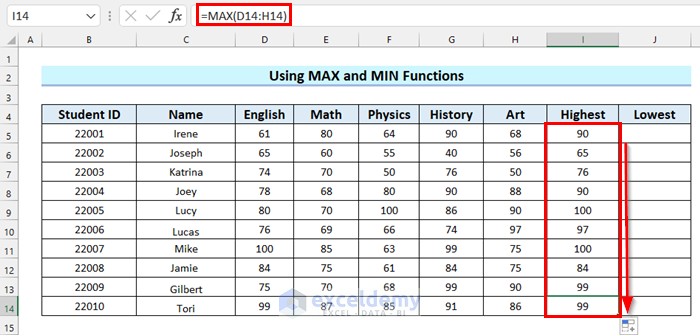Creating an Easy Grade Sheet in Microsoft Excel

Managing student grades can be a daunting task, especially when dealing with large classes or multiple subjects. Utilizing tools like Microsoft Excel can significantly simplify this process, turning what could be a hectic activity into a streamlined operation. This guide will walk you through the creation of an easy grade sheet using Microsoft Excel, ensuring that grading becomes more efficient, less error-prone, and easily customizable to fit your specific teaching needs.
Understanding Excel for Grade Sheets

Before diving into the technical steps of creating a grade sheet, let’s briefly explore why Microsoft Excel is an excellent choice for this task:
- Flexibility: Excel allows for customization in tracking and calculating various types of assessments.
- Automation: Features like formulas can automate calculations, reducing human error.
- Scalability: Whether managing a class of 30 or a large institution, Excel scales seamlessly.
Setting Up Your Excel Sheet


To set up your grade sheet:
- Open Excel: Start by launching Microsoft Excel on your computer.
- Label Your Columns: In row 1, label columns with headers like Student ID, Name, Assignment 1, Assignment 2, etc. Here’s an example of how you might structure your table:
- Inputting Student Data: Below the headers, enter the relevant student information. Each row represents a student.
| Student ID | Student Name | Assignment 1 | Assignment 2 | Midterm | Final | Total | Grade |
|---|

💡 Note: Ensure each assignment and exam has a dedicated column, and keep space for the total score and final grade.
Calculating Grades with Excel Formulas

Once your data is inputted, formulas will take over the heavy lifting:
- Summing Scores: In the ‘Total’ column, use the SUM function to add up individual scores. For example:
=SUM(C2:F2) - Calculating Percentage: To find the percentage, divide the total score by the maximum possible score, then multiply by 100:
=G2/(MAX_COLUMNS*MAX_SCORE_PER_COLUMN)*100Replace MAX_COLUMNS and MAX_SCORE_PER_COLUMN with your actual values. - Assigning Grades: Use the IF function to assign letter grades based on percentages:
=IF(I2>=90,“A”,IF(I2>=80,“B”,IF(I2>=70,“C”,IF(I2>=60,“D”,“F”))))
Conditional Formatting for Visual Insights

Apply conditional formatting to make your grade sheet visually intuitive:
- Select Cells: Highlight the cells in your grade or percentage columns.
- Create a Rule: Use conditional formatting rules to color-code grades, making it easy to see at a glance which students are performing well or need attention.

Final Touches: Sorting and Filtering

For better organization:
- Sort by Name or ID: Keep your list orderly for easy reference.
- Filter Options: Implement filters to view specific data sets, like grades for a particular assignment.
Analyzing Performance and Data Insights

Excel’s analytical capabilities can provide deeper insights into student performance:
- Average Scores: Use the AVERAGE function to assess class performance on specific assessments.
- Grade Distribution: A COUNTIF formula can show how many students received each letter grade, helping understand performance distribution.
- Progress Tracking: Highlight improvements or drops in grades over time to identify trends.
Creating an easy grade sheet in Microsoft Excel not only organizes your grading but also empowers you with data-driven insights. This tool allows for seamless updates, grade calculations, and provides visual cues for performance analysis. By following these steps and harnessing Excel’s capabilities, educators can focus more on teaching and less on administrative work.
Can I use this grade sheet template for multiple classes?

+
Yes, you can! Excel allows you to create multiple sheets within one workbook. Each class can have its own sheet, or you can duplicate the template for new classes.
How do I handle late submissions or extra credit?

+
To manage late submissions, add a column for late submissions, apply penalties or adjust scores accordingly. For extra credit, include an additional column where extra points can be added manually.
What if I need to change the weight of assignments?

+
You can adjust the weight of assignments by modifying the formulas that calculate total scores or percentages. Excel’s flexibility means you can update these weights easily without altering the whole sheet.
Is it possible to share this Excel grade sheet with students?

+
Yes, you can share this sheet through cloud services like OneDrive or Google Drive, allowing you to manage permissions for viewing, editing, or commenting on the sheet.
How do I handle missing scores in Excel?

+
Excel can mark missing scores with a unique value or leave cells blank. Formulas can be adjusted to account for these by either ignoring them or assigning a zero value automatically.